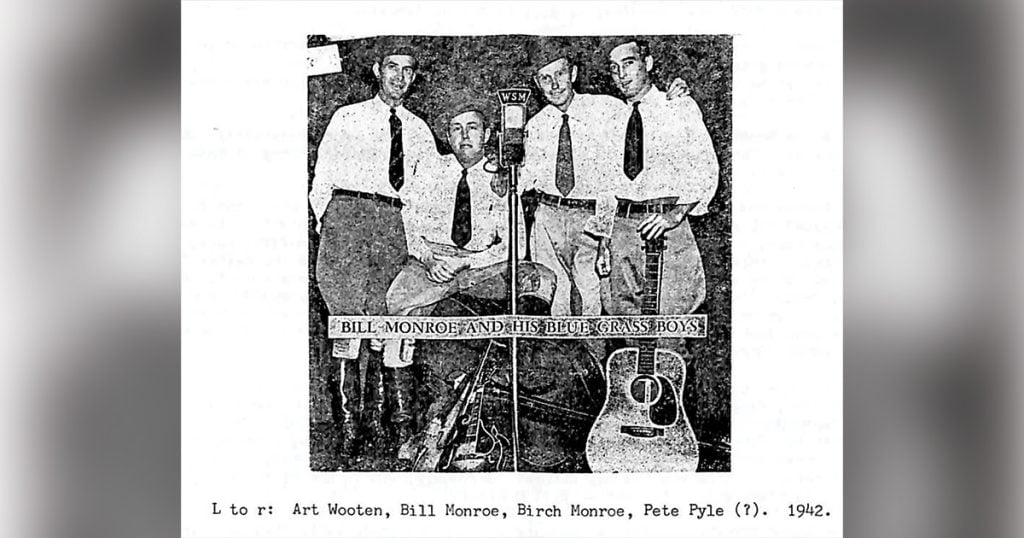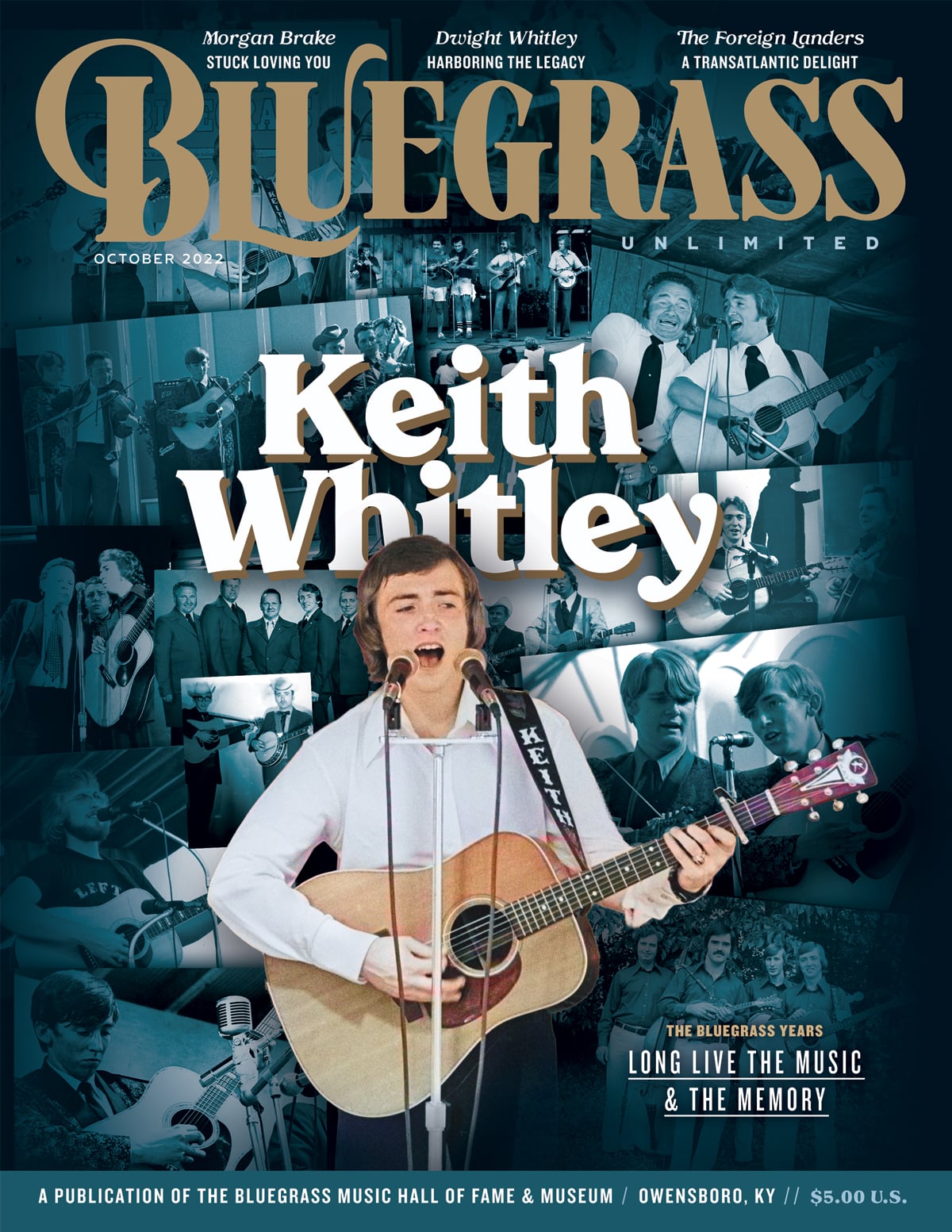Home > Articles > The Archives > Bill Monroe And The Fiddle
Bill Monroe And The Fiddle
Reprinted from Bluegrass Unlimited Magazine
February 1969, Volume 3, Number 8
The fiddle has always had an important part in bluegrass music but no one has given this instrument a more prominent place in his band than Bill Monroe.
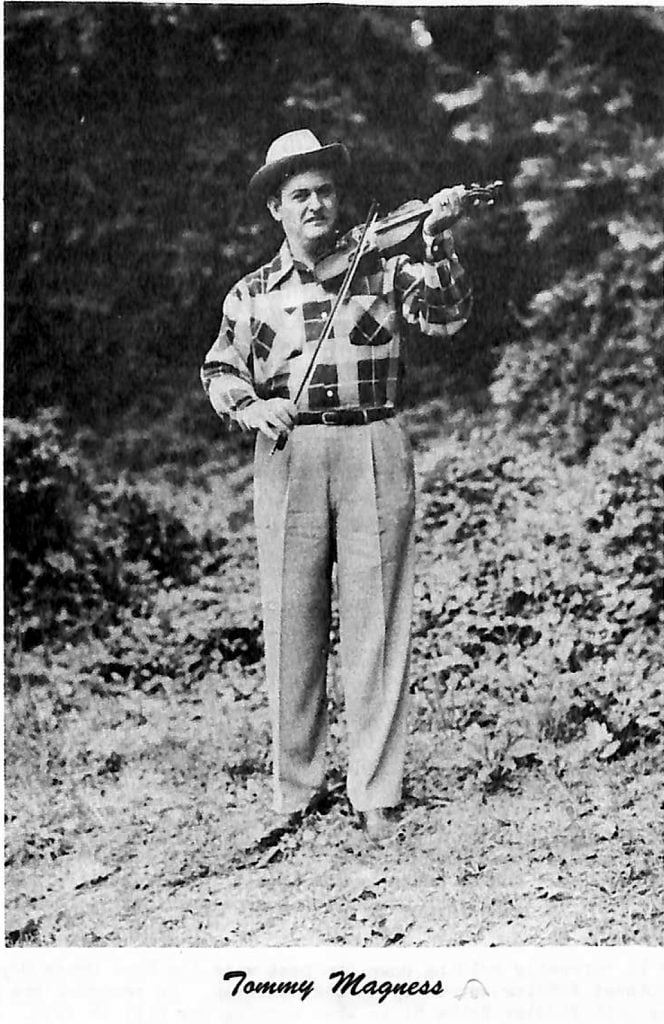
This featuring of the fiddle goes right back to Bill’s first band. When the Monroe Brothers broke up in 1938, everyone thought Bill would just find a good lead-singing, hard-driving guitar player to fill Charlie’s shoes and go on as a duet. Instead, Bill started his first full band with fiddle, mandolin, guitar and bass. I would like to inject at this time other concepts Bill brought into existence with the first band. With the first Blue Grass Boys came sacred quartet singing, the featuring of instrumentals, and his high lonesome style of singing. I mention these to document the fact that the “Father of Bluegrass” is not just an honorary title given Bill, but one he has earned by his many innovations.
In the years prior to World War II, the B.G.B. included some top fiddlers. Art Wooten worked the longest and recorded “Back Up and Push” and the “Orange Blossom Special” (which I believe was the first recording of this classic.) Tommy Magness played on the other Bluebird sessions and fiddled “Katy Hill” in a style that caused this number to become a standard. Tommy is also the fiddler on the “Muleskinner Blues”. Howdy Forrester became a member of the band about 1942 but left a short time later to serve in the U.S. Navy.
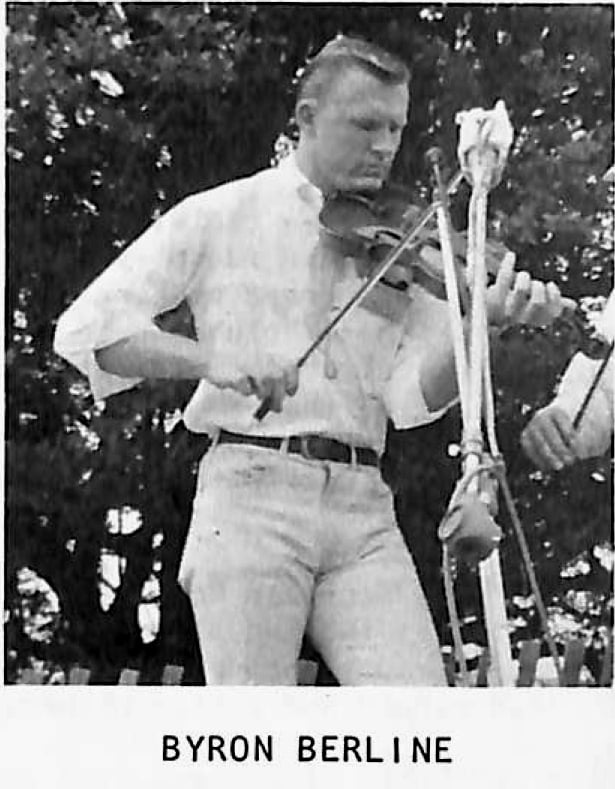
In the mid-1940s, Chubby Wise became a Blue Grass Boy. Chubby is on all the Columbia releases including those prior to and after Lester and Earl’s time with Bill. He is my all-time favorite fiddler. His style has a sensitive, blue, sweet sound that a lot of other musicians have imitated. Chubby is probably best remembered for his break on “Can’t You Hear Me Callin’” but I like the feeling he put into “I Hear A Sweet Voice Calling” and “When You Are Lonely”. Chubby joined Clyde Moody after his stay with Bill and together they composed “The Shenandoah Waltz”.
The 1950s and the switch to Decca saw another group of fine fiddlers as members of the band. Benny Martin fiddled for Monroe during this period and he must be considered as one of the all-time greats. Benny joined Roy Acuff’s group when he left Bill and worked for Flatt and Scruggs in Raleigh, N.C. in 1952 and later started a career as a country style singer.
Vassar Clements worked and recorded with the Blue Grass Boys during this period as did Gordon Terry. Gordon followed Benny Martin’s lead and went on to be a country singer. Red Taylor is also from this era and his contribution to Bill’s recordings is unsurpassed. His breaks on “Rawhide” and work on “Uncle Pen” are second to none in bluegrass recording.
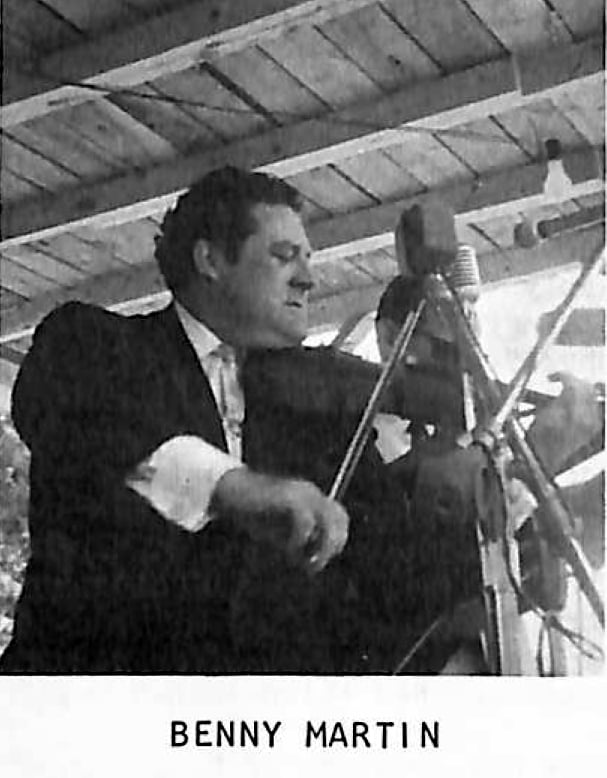
A major change in Monroe’s style came in the mid ‘50s with the use of twin fiddles. The first instrumental release using two fiddles was “Cheyenne”/”Roanoke”. Some of Bill’s most popular recordings, including “Wheel Hoss”, “Scotland” and “Panhandle Country” used this arrangement.
The current decade finds more excellent men working as Bill Monroe’s fiddlers. Richard Greene is on most of the cuts of the “Blue Grass Time” album recorded in 1966 and 1967. Byron Berline followed Greene and his fiddle can be heard on the latest instrumental release “The Gold Rush”/ “Virginia Darlin’”. Benny Williams, who worked for Monroe previously, took over when Byron was called into service.
Veteran Kenny Baker is currently holding down the post with the Blue Grass Boys. Kenny is regard regarded as the smoothest fiddler currently in the business. He recorded the “Panhandle Country” and “Scotland” along with fiddler Bobby Hicks when working for Bill in 1958. In the early ‘60s he composed “Baker’s Breakdown” and “Big Sandy River” which are included in the “Bluegrass Special” album.
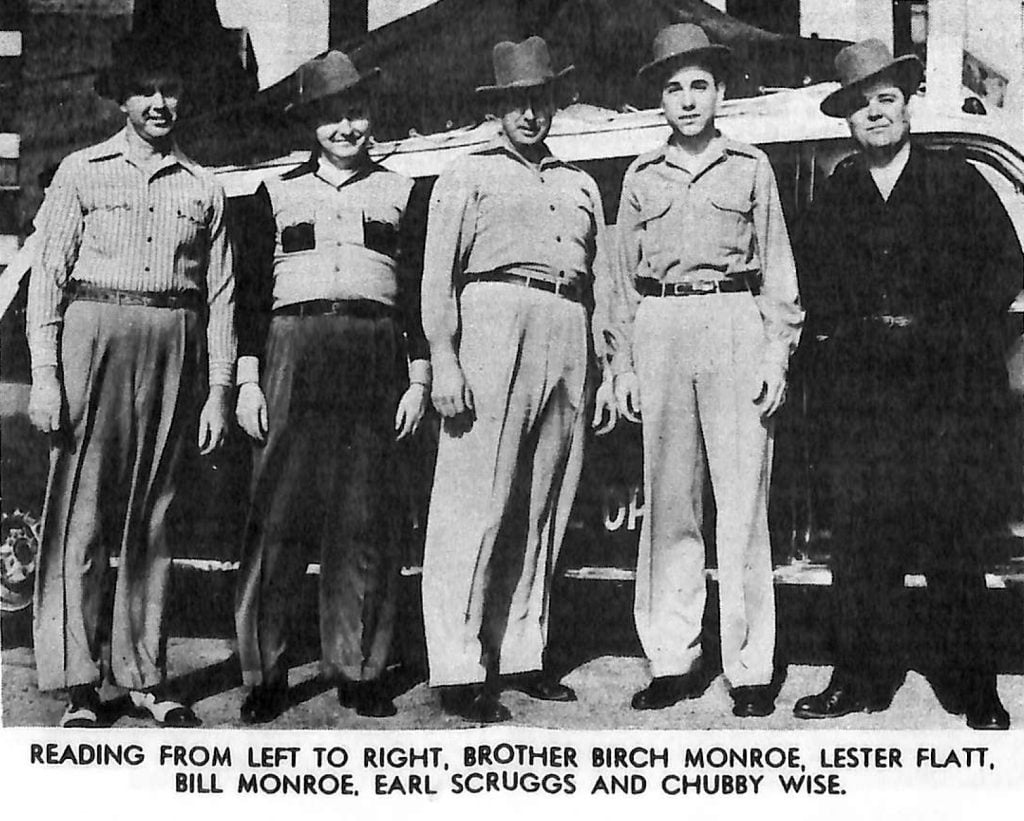
In recent years, Bill has placed an even greater emphasis on the fiddle. The fiddlers for the Blue Grass Boys must have a knowledge of the keys, tempos and arrangements of all of Monroe’s past recordings since the majority of his show repertoire uses this instrument.
Although Bill Monroe is most recognized for his mandolin and singing style, he must also be commended for continuing to give the fiddle a prominent place in bluegrass music.
